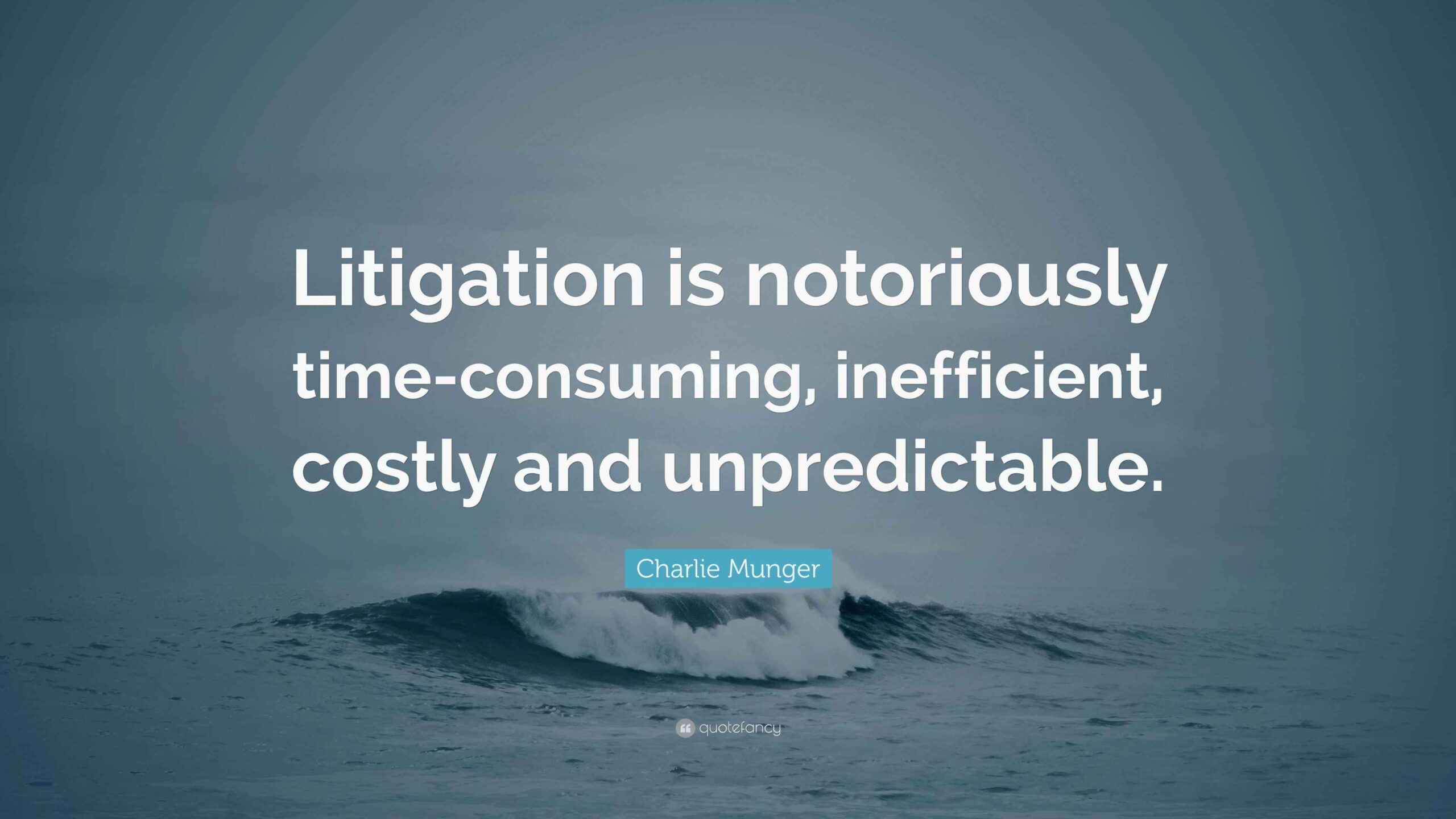Junior attorneys often ask me for the two-minute explanation of the litigation process as someone who has been through it many times. Business owners often ask the same questions for the same reason: they are not attorneys in the same way that I do not know how to run their businesses.
Assessing and Managing Litigation Risk
Proactive identification and assessment of litigation risk is paramount. Everyone must be prepared for various scenarios and have a plan in place. The level of detail in the plan is dependent on what the client requests. As a general rule, it is better to have a more detailed plan.
- Proactive Risk Identification: Litigation arises from contract disputes, ownership disputes, incidents, recalls, governmental investigations, negative media coverage and many other possible reasons. While legal counsel cannot predict the future, a close relationship with the client to discover key internal issues, the ownership structure, and relevant trends in the relevant industry that enables outside counsel to conduct a worthwhile litigation risk assessment.
Most clients do not have the financial wherewithal or motivation to engage in this type of proactive planning. While this is an ideal outcome, experienced attorneys know that they need to pay attention to the news about their biggest clients and their industries.
Two other thoughts on this topic:
- New Company Integration: When starting at a new company, counsel should develop strategies for “how to assess litigation risk.” This would cover both commercial litigation risk and owner vs. owner litigation risk.
- Internal Investigations: For more mature businesses, strategies for conducting and documenting internal investigations should be encouraged. Companies who outsource payroll through payroll services or PEOs often have this service provided to them. Therefore, I encourage clients to see what they are already paying for.
Navigating Business Interests vs. Legal Strategy
Balancing the competing interests of various stakeholders within a company during high-profile or “bet the company” legal matters is never easy.
- The Tension: The presentation acknowledges the tension between a number of business and personal interests that inevitably compete with legal strategy.
- Involving Key Stakeholders: Attorneys should ask their clients for the full list of everyone who should be involved. Then they should ask questions to supplement the list because at least one person is inevitably missing regardless of the reason. Experienced attorneys know the who is often are not listed.
- Practical and Ethical Obligations: Attorneys must navigate how to handle conflicts between client desires, internal client conflicts, legal strategy, and ethical obligations. This is a skill that comes with time and experience for all attorneys—none of us knew how to do this well earlier in our careers.
The Ins and Outs of Insured Claims
Understanding, using, and relying on insurance coverage is a vital aspect of managing litigation. The strategic options for the defense could vary widely.
- Proactive Coverage: Ideally, counsel can think ahead and establish appropriate “coverage in advance of claims” for the most likely scenarios, many of which have already occurred.
- Coverage Assessment: It’s important to think about what coverages make sense and provide value. My advice is always straightforward: talk to your insurance broker. And if your insurance broker is not providing enough help or guidance, then you need to find a replacement.
- Insurers’ Role: The insurer does not always “call the shots” when choosing counsel and directing defense. Companies may have options although identifying and using insurance coverage counsel is commonly the right decision. It is imperative to know whether the insurance company will represent key individuals if directors and officers insurance or other existing coverage does not protect them.
Best Practices for Managing Outside Counsel
The selection and effective management of outside counsel are critical for successful litigation outcomes. The best attorneys are not found by accident. Nor are they perfect.
- Types of Counsel: Companies should be aware of and understand different types of outside counsel (insurance defense, corporate, coverage, etc.).
- Selection and Relationships: Selecting counsel and deciding to engage legal counsel are difficult decisions. Common mistakes include hiring family members or friends without the requisite experience, waiting to engage someone until after litigation has started, and naively believing attorneys promising quick and cheap results.
- Clear Communication and Involvement: Companies must be clear in what you expect from outside counsel and to determine how involved you want employees or owners to be (attend depositions, significant court hearings, etc.).
Corporate Representatives and Documents
Preparing corporate representatives and the management of company documents are crucial aspects of litigation in a world where everything is somehow memorialized electronically.
- Corporate Deponents: Corporate representative depositions can be the most important aspect of litigation. The selection of appropriate witnesses and their preparation are key.
- Managing Employees: Challenges include managing overworked employees and litigation demands.
- Corporate Documents: Critical steps include identification of key personnel, litigation holds, and “custodian searches.” Counsel must be prepared for using and preparing for disclosure of corporate documents and establishing respect for confidentiality orders.
- “Bad Company Documents”: They are a reality and cannot be hidden. But they can be used to create internal plans to protect against them in the future.
Strategic Decision-Making: Fight vs. Settle
The critical decision of when to pursue litigation and when to seek a settlement must be considered throughout a dispute.
- Strategic Goals: Counsel must discuss strategic goals of litigation. What is a win? Do you want to keep doing business with the opposing party?
- Simple Probability: A commonly used formula is Anticipated Cost or Recovery of Litigation multiplied by probability of outcome (which includes estimated award or recovery as relevant).
Litigation is an art, not a science. But this is not an excuse for failing to choose a properly experienced artist.
David Seidman is the principal and founder of Seidman Law Group, LLC. He serves as outside general counsel for companies, which requires him to consider a diverse range of corporate, dispute resolution and avoidance, contract drafting and negotiation, real estate, and other issues. He can be reached at david@seidmanlawgroup.com or 312-399-7390.
This blog post is not legal advice. Please consult an experienced attorney to assist with your legal issues.
Photo credit: Munger-quote.jpg













